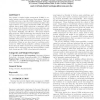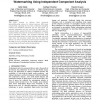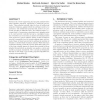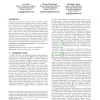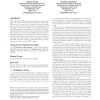DRM
2005
Springer
14 years 4 months ago
2005
Springer
DRM
2005
Springer
14 years 8 months ago
2005
Springer
Watermarking technologies have been envisioned as a potential means for establishing ownership on digital media objects. However, achievable robustness and false-positive rates of...
DRM
2005
Springer
14 years 8 months ago
2005
Springer
The domain of digital rights management (DRM) is currently lacking a generic architecture that supports interoperability and reuse of specific DRM technologies. This lack of arch...
DRM
2005
Springer
14 years 8 months ago
2005
Springer
This paper presents an efficient blind watermark detection/decoding scheme for spread spectrum (SS) based watermarking, exploiting the fact that in SS-based embedding schemes the ...
DRM
2005
Springer
14 years 8 months ago
2005
Springer
Advances in reverse engineering and program analyses have made software extremely vulnerable to malicious host attacks. These attacks typically take the form of intellectual prope...
DRM
2005
Springer
14 years 8 months ago
2005
Springer
Interoperability is currently seen as one of the most significant problems facing the digital rights management (DRM) industry. In this paper we consider the problem of interoper...
DRM
2005
Springer
14 years 8 months ago
2005
Springer
A software obfuscator is a program O to transform a source program P for protection against malicious reverse engineering. O should be correct (O(P) has same functionality with P)...
DRM
2005
Springer
14 years 8 months ago
2005
Springer
DRM has been widely promoted as a means to enforce copyright. In many previous papers, it has been argued that DRM gives too much power to rights holders and actually goes beyond ...
DRM
2005
Springer
14 years 8 months ago
2005
Springer
In this paper, we describe a novel statistical audio watermarking scheme. Under the control of the masking thresholds, watermark is embedded adaptively and transparently in the pe...

